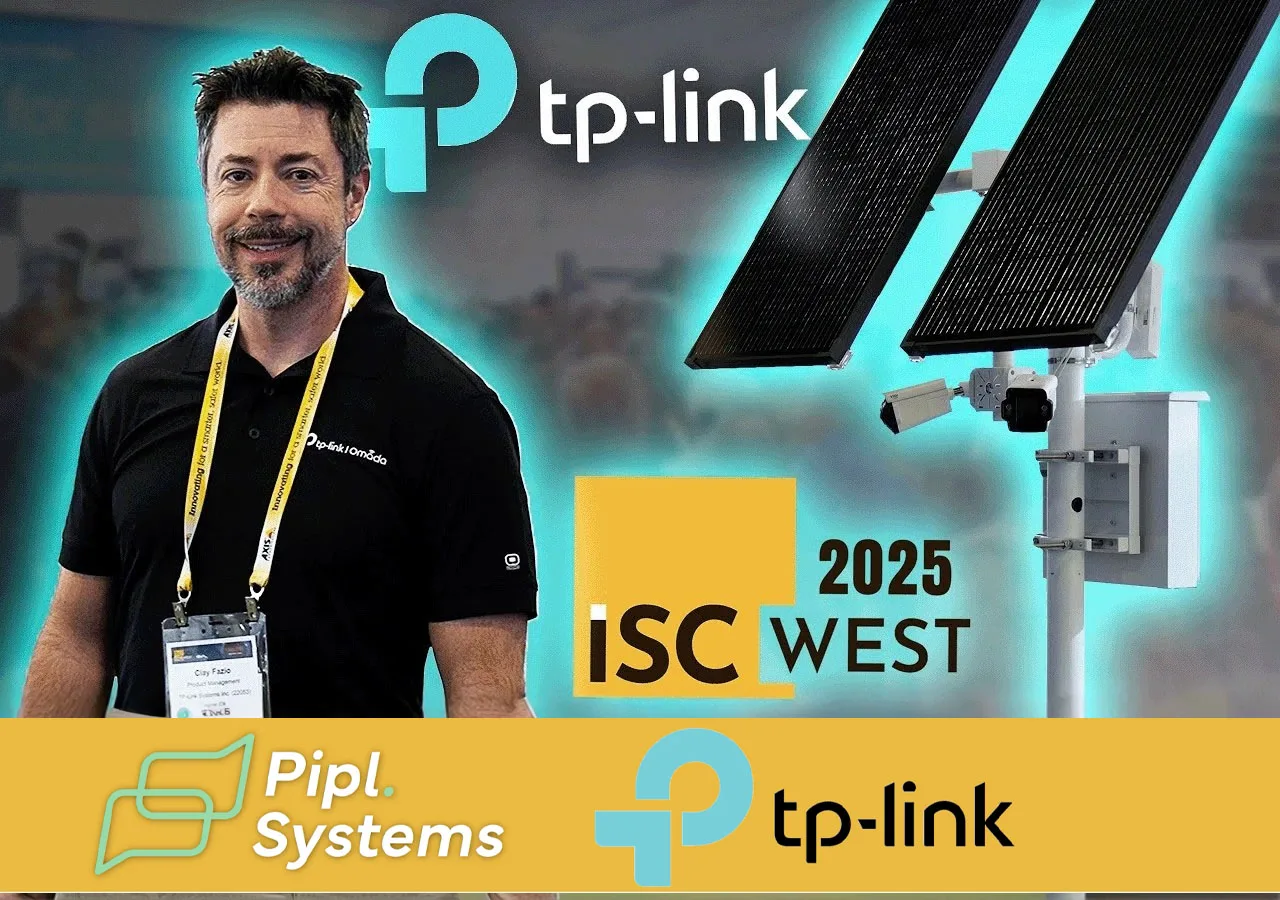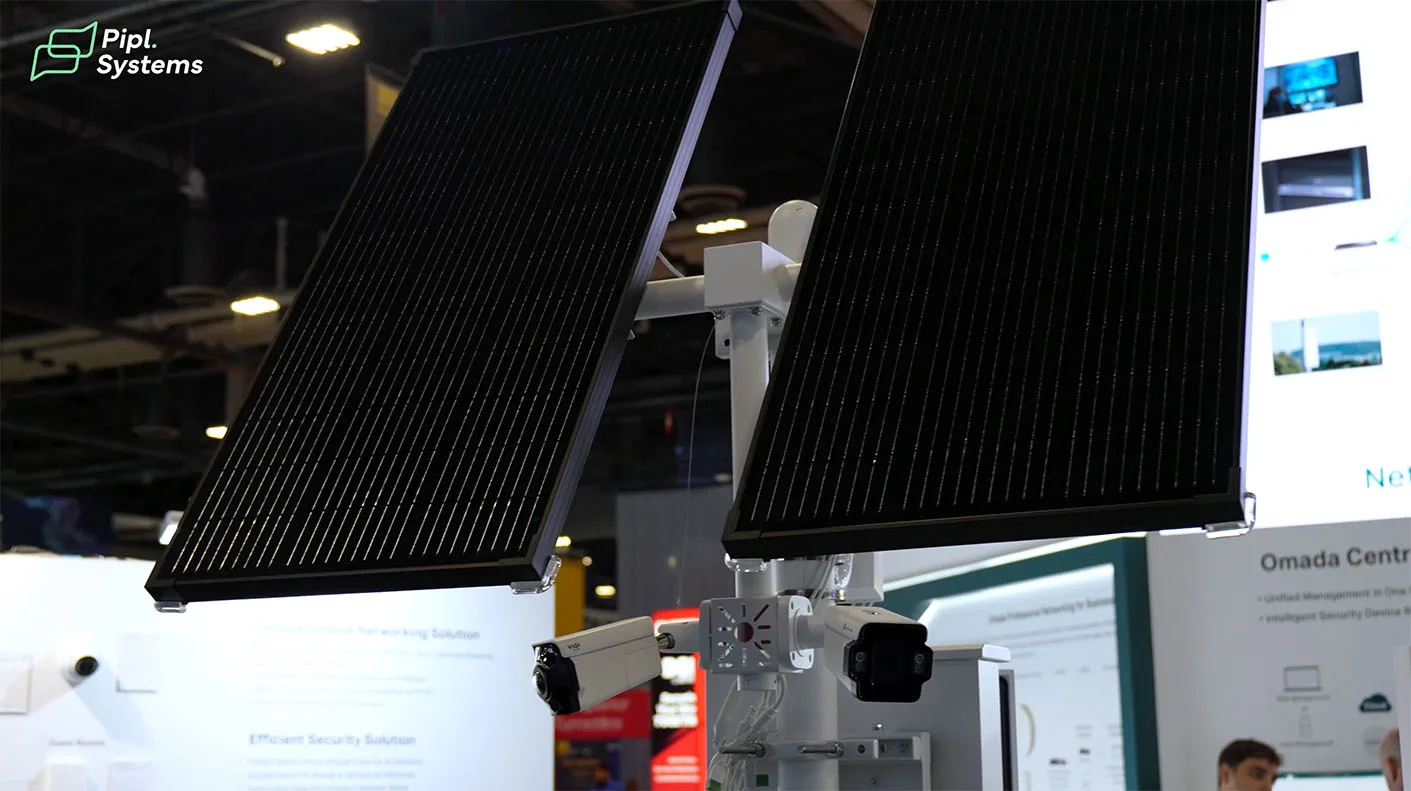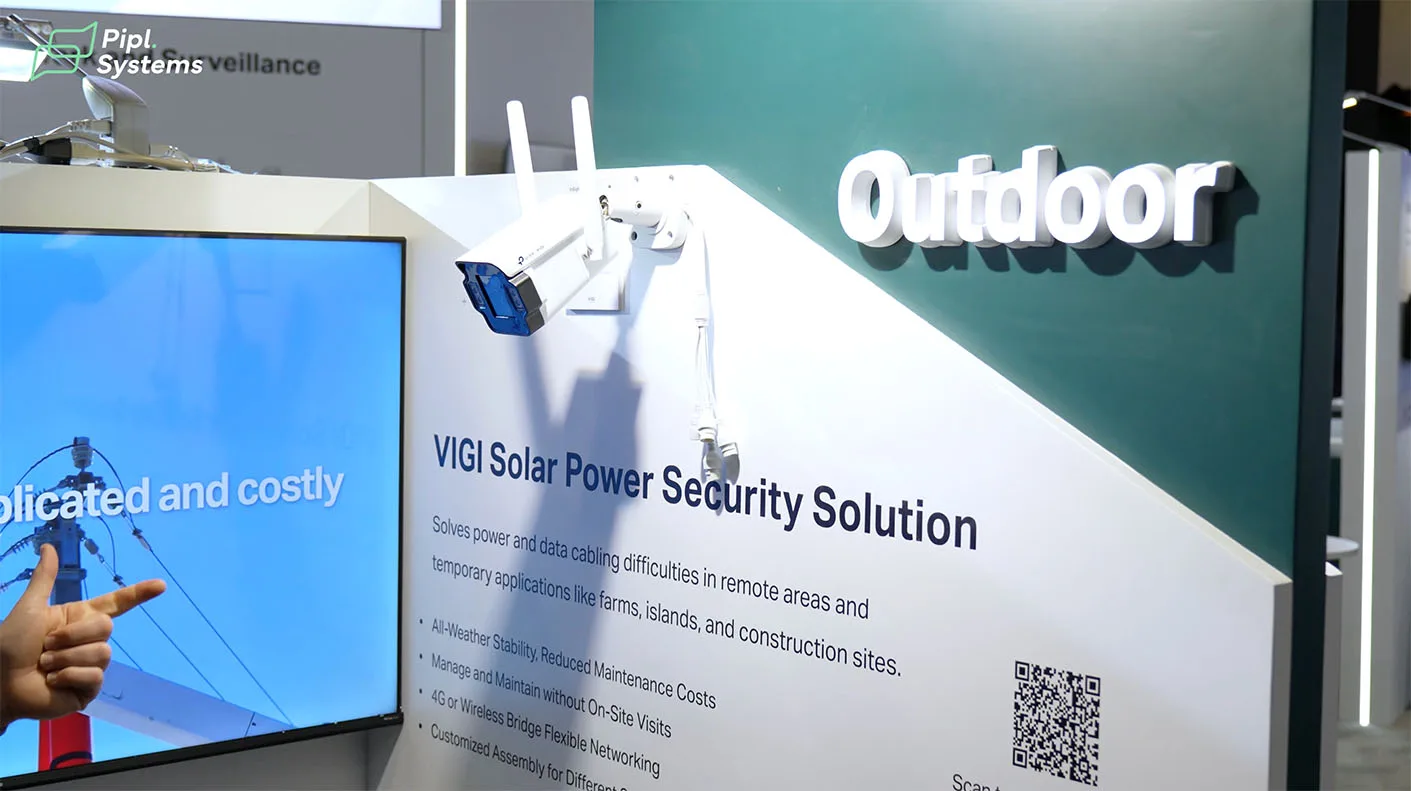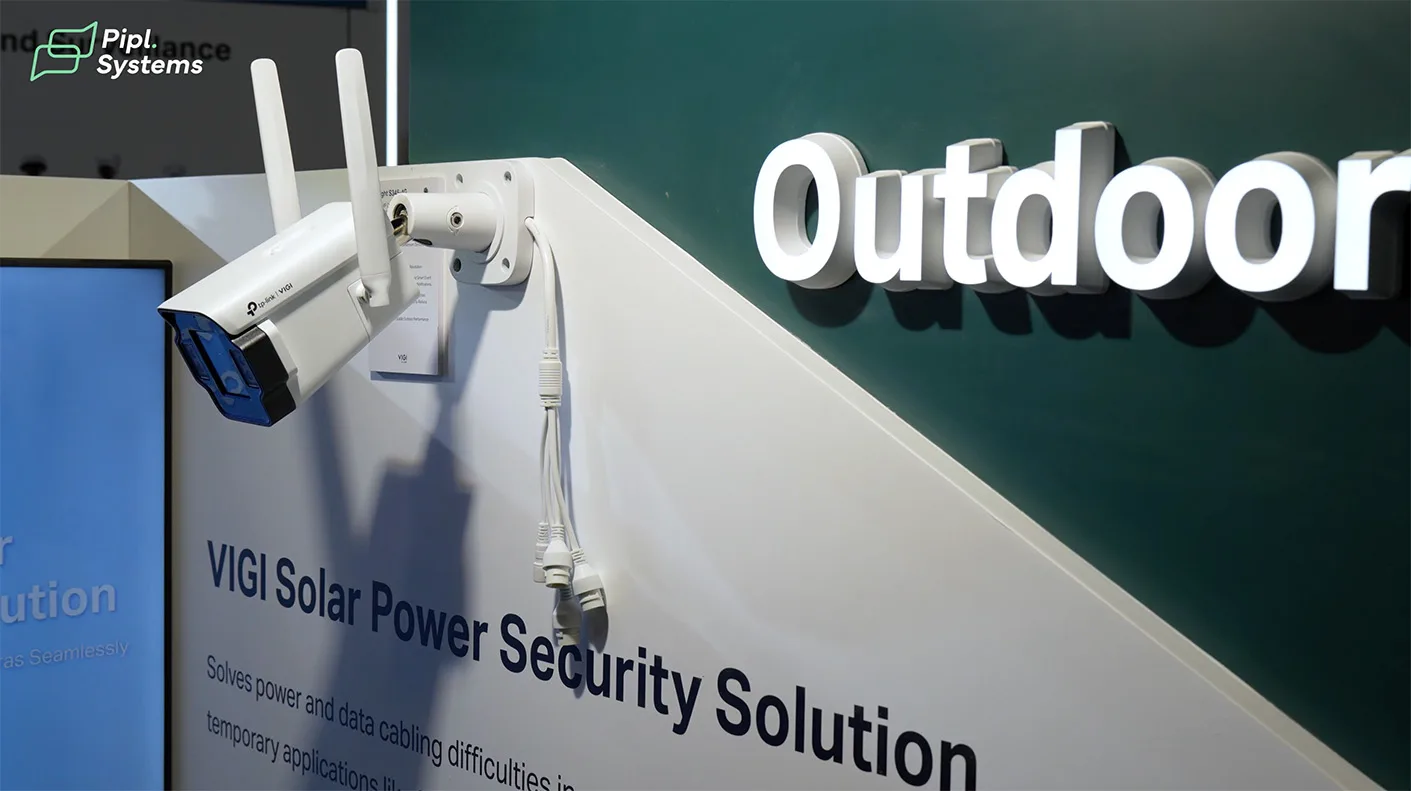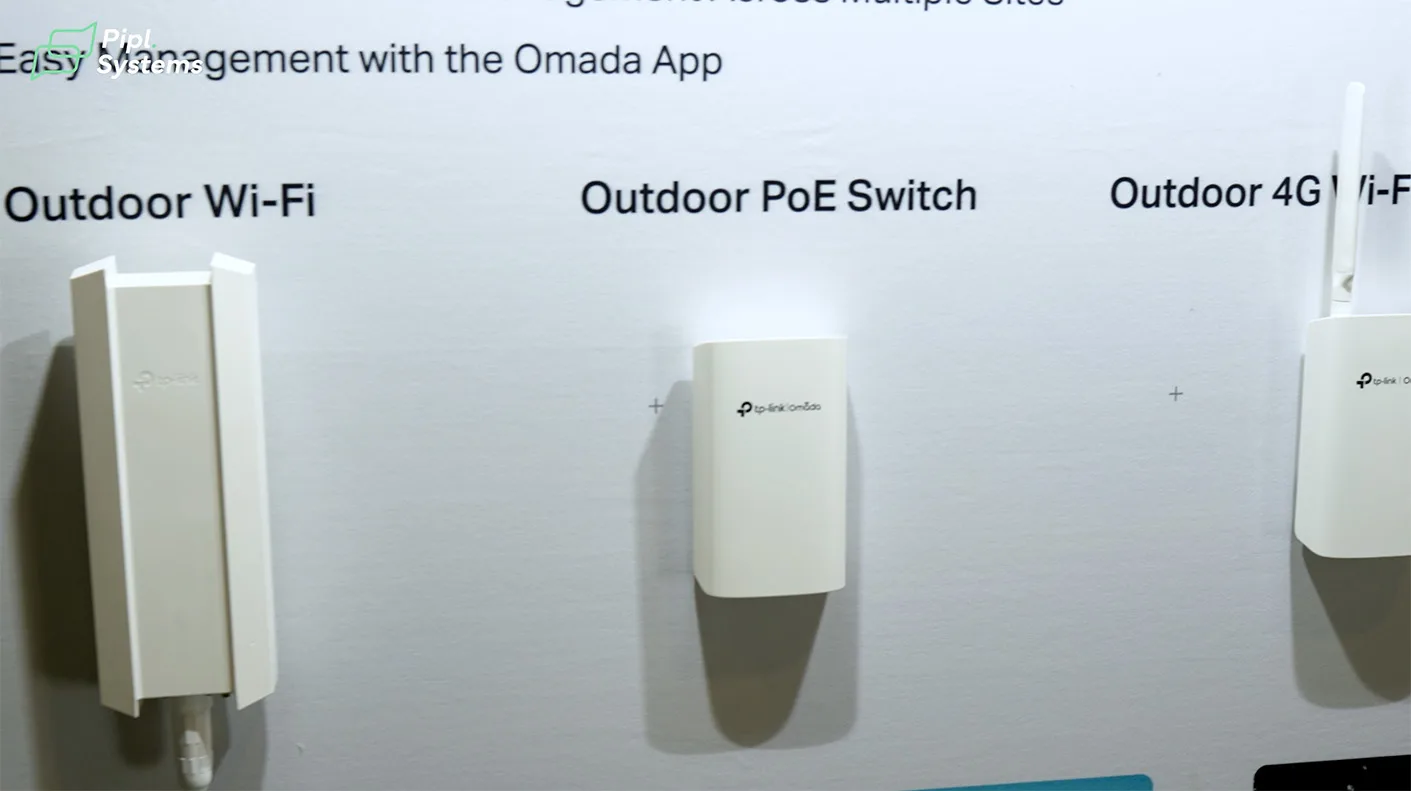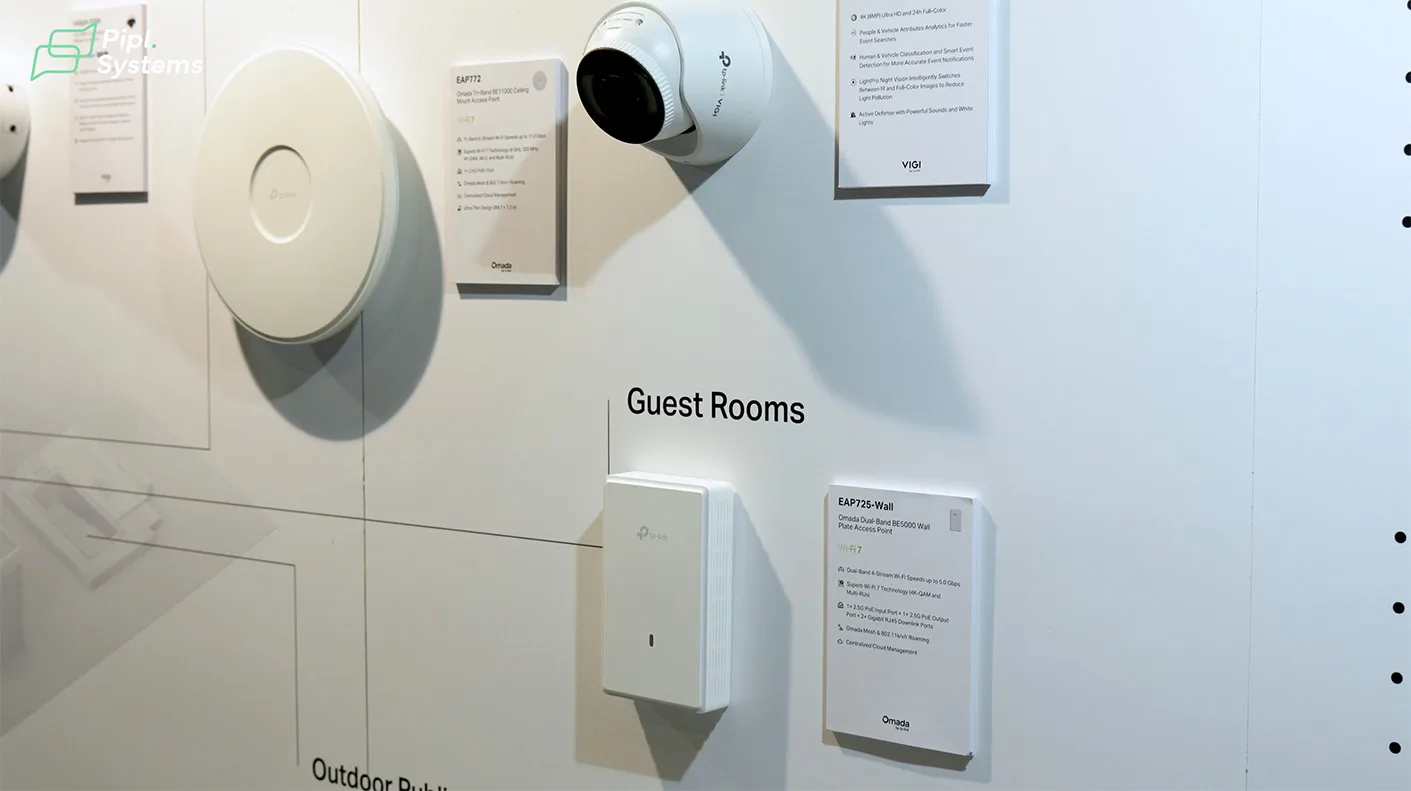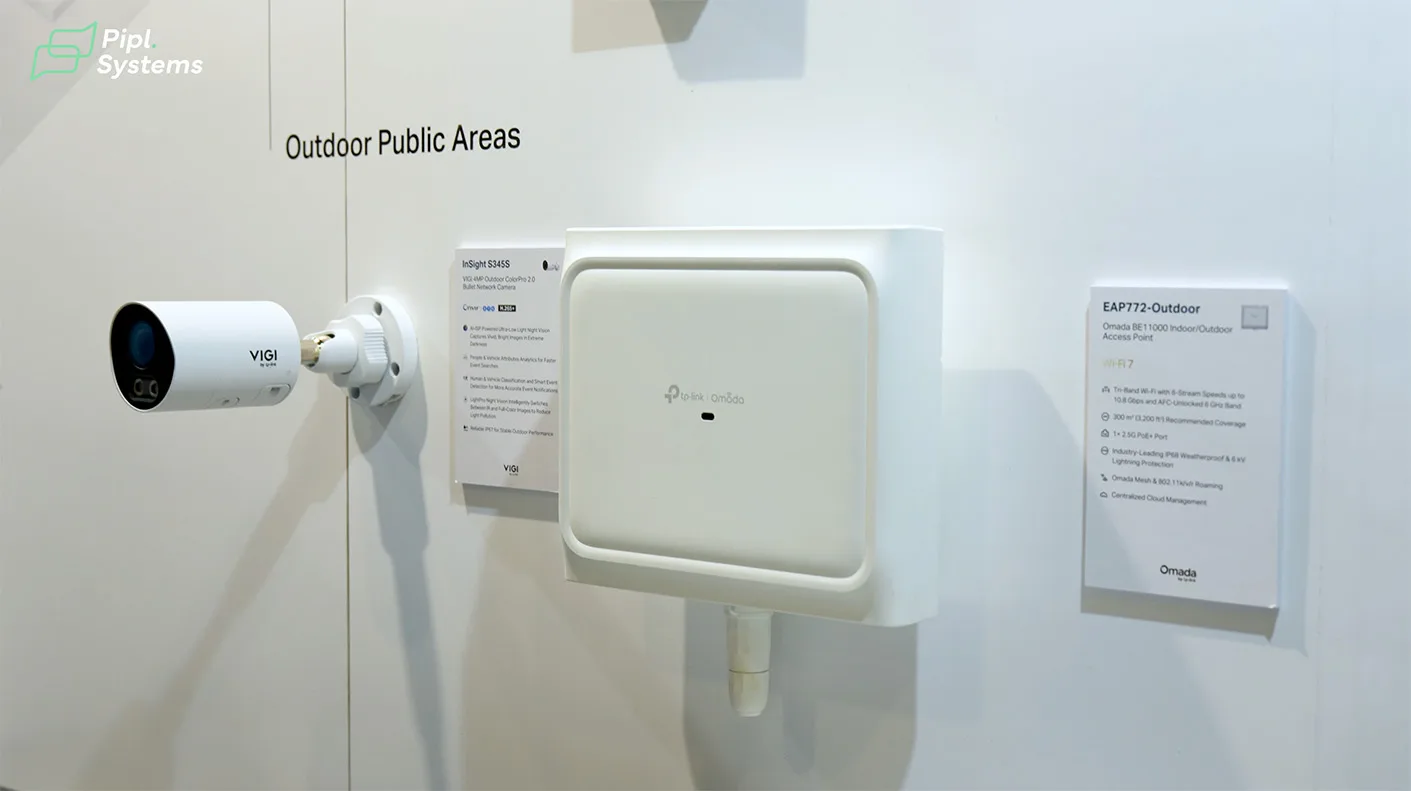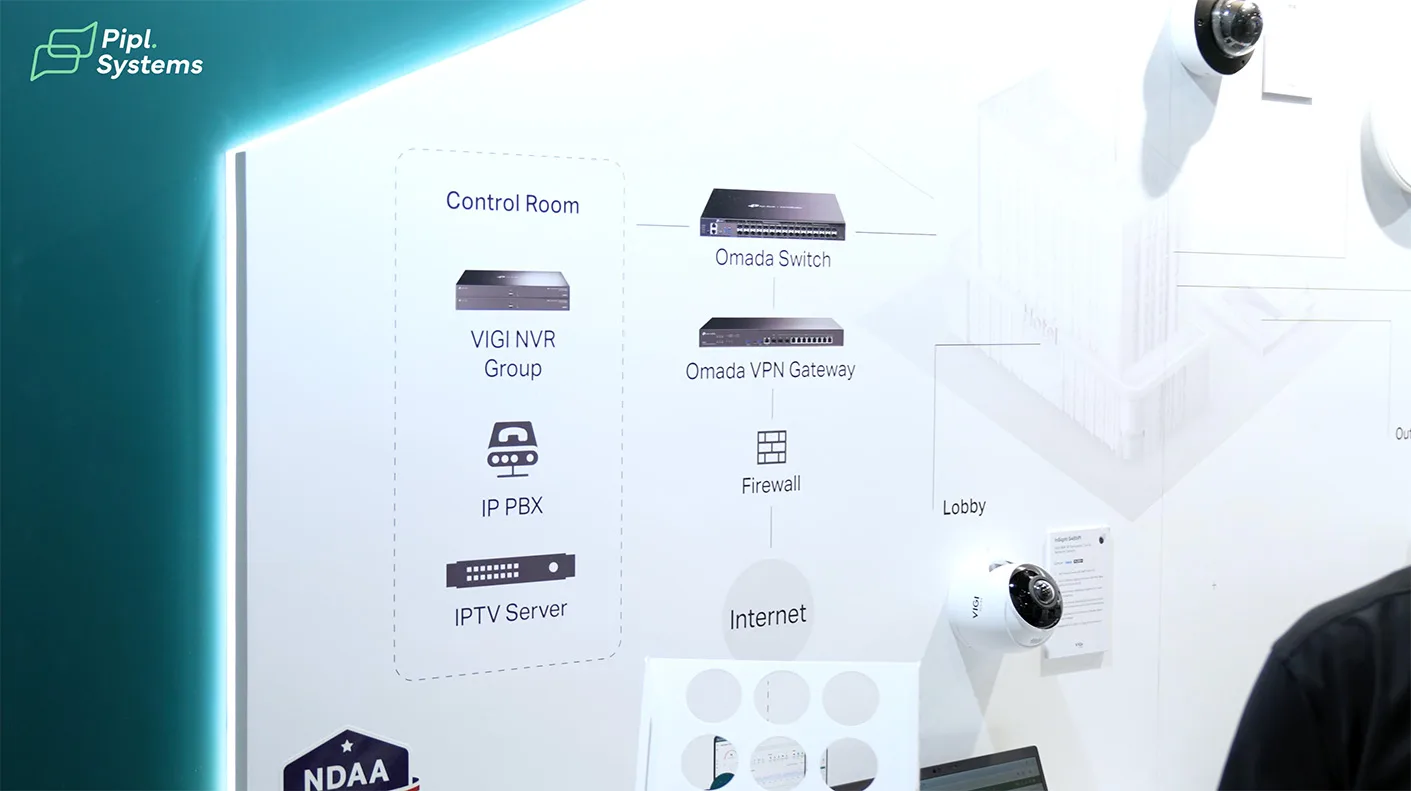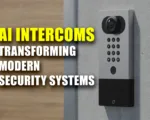TP-Link’s Unified Vision at ISC West 2025
At ISC West 2025, TP-Link presented a unified ecosystem built around two tightly integrated product families: the VIGI camera system and the Omada Networking platform. Together, they form a dual offering targeting professional installers, system integrators, and IT decision-makers looking for scalable infrastructure that merges physical security with enterprise-grade networking.
The VIGI camera system was introduced by Clay Fazio, who underscored its off-grid and LTE-ready capabilities through a live demonstration of a solar-powered deployment. Meanwhile, Kevin Dinh led the walkthrough of Omada Central, the company’s centralized software-defined platform for unified control over access points, gateways, switches, and now surveillance endpoints.
“So here at TP-Link, most people know us as the networking provider… we’re now in the process of introducing our solutions for surveillance,” said Clay Fazio.
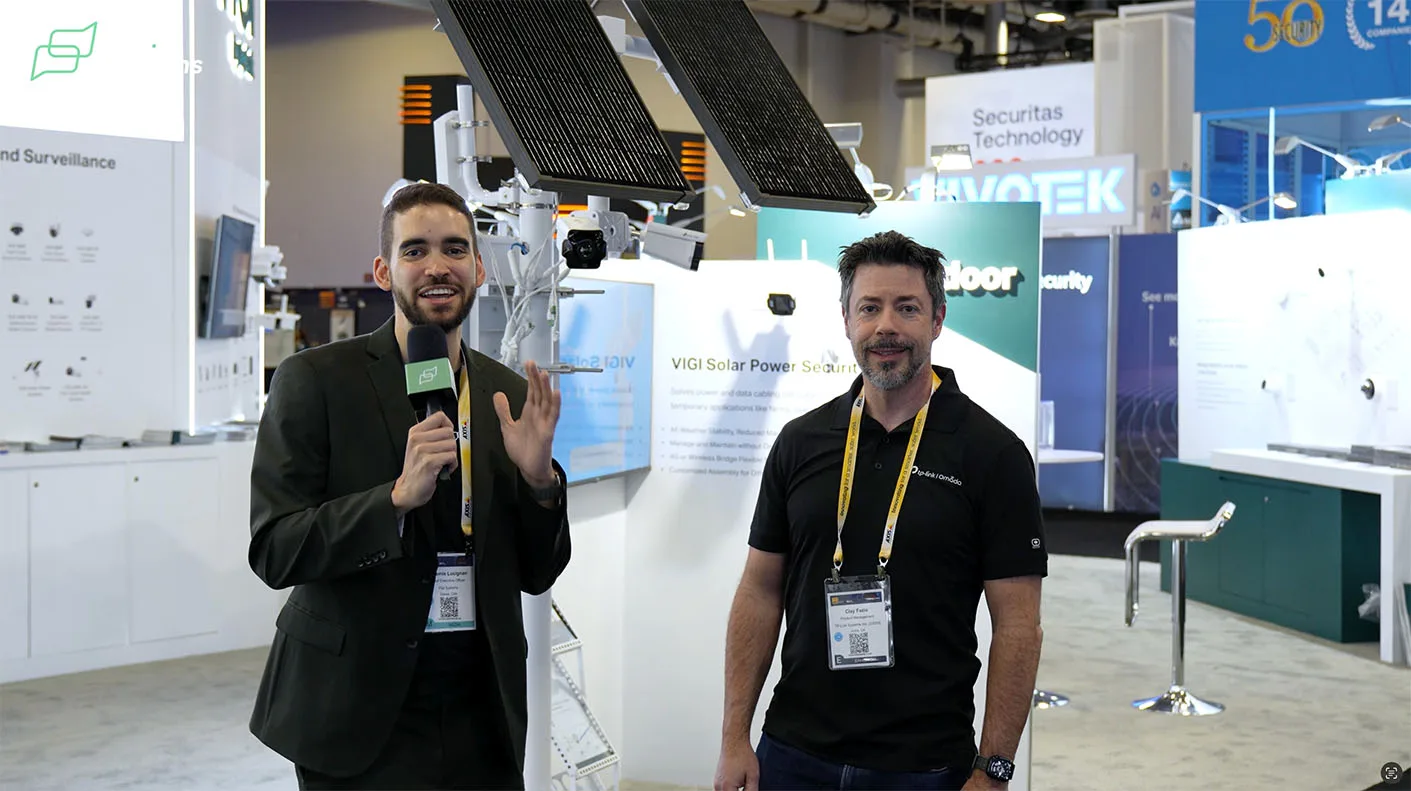
By combining surveillance and network management under a single vendor, TP-Link aims to simplify integration, speed up deployments, and offer better visibility into distributed environments across sectors like education, hospitality, retail, and light commercial. The company’s booth made clear that this is no longer just about individual devices, but about a cohesive, vertically aligned platform strategy.
What Is VIGI in TP-Link?
A Surveillance Brand from a Networking Giant
Most security professionals know TP-Link as a global leader in networking hardware, but with the VIGI camera system, the company is expanding its reach into video surveillance. As part of this transition, TP-Link is introducing its VIGI line to the North American market after several years of deployment success abroad.
VIGI is positioned to complement TP-Link’s existing networking solutions with dedicated surveillance hardware and software. Designed for off-grid, mobile, and enterprise use cases, the brand includes IP cameras, LTE-enabled units, solar-powered kits, and NVRs tailored for scalable deployment.
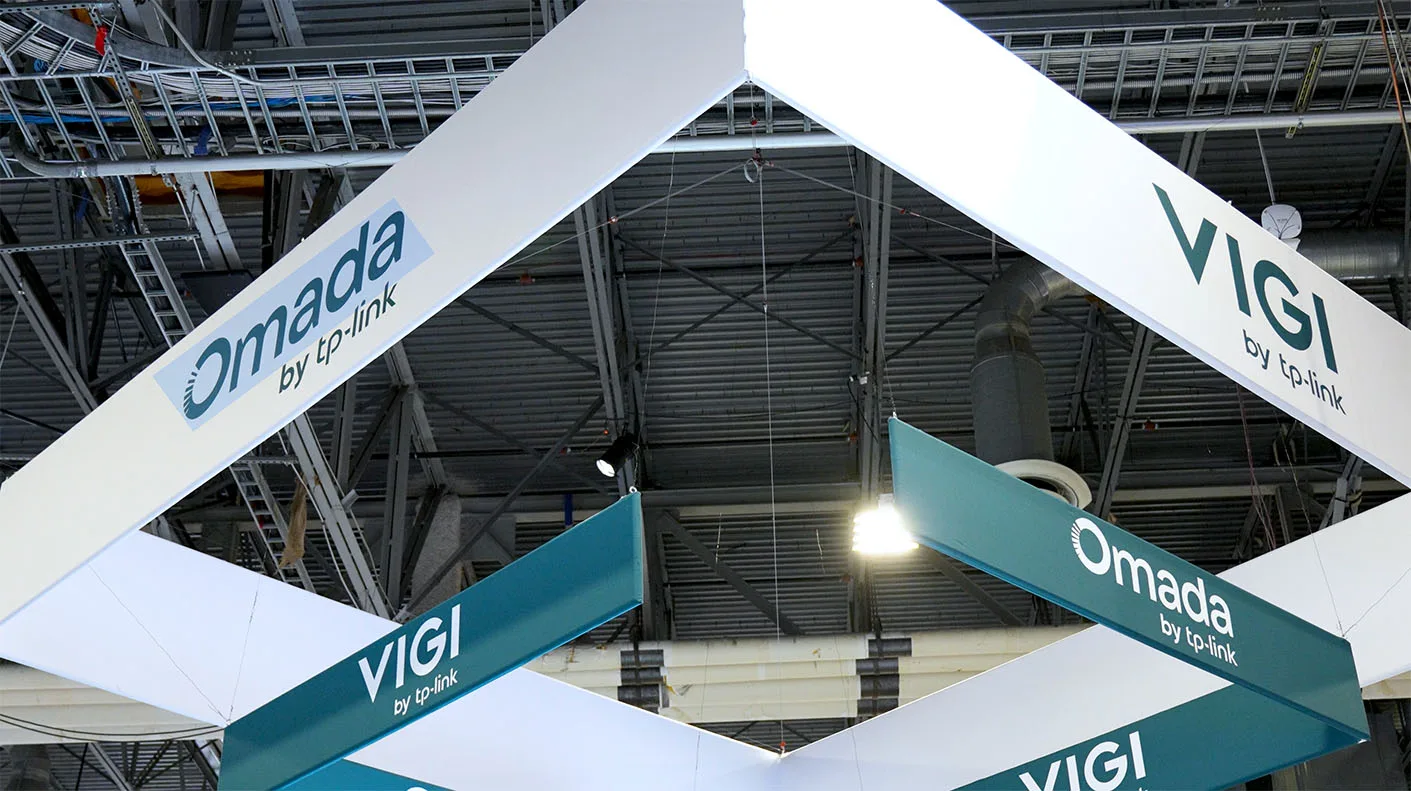
Bridging the Gap in Remote Monitoring
The core value proposition of the VIGI product line lies in its flexibility. Whether it’s a construction site, a rural farm, or a facility lacking reliable power and connectivity, VIGI cameras are engineered to operate independently, using solar panels, battery banks, and 4G LTE connectivity. A single wireless bridge and camera hub can power a multi-camera setup for days without sunlight, making it ideal for integrators working in rugged or underserved environments.
TP-Link’s approach with VIGI also emphasizes interoperability and a low barrier to entry. Most units are plug-and-play, and they all support local recording and remote access through the VIGI VMS.
A Growing Ecosystem
In addition to its hardware, TP-Link offers a fully integrated video management solution through the VIGI VMS. Available as both a local and cloud-based platform, the software supports analytics, motion alerts, and multi-site control. For those needing centralized recording, the company also provides VIGI NVR units with growing channel support, including models in development for up to 128 cameras.
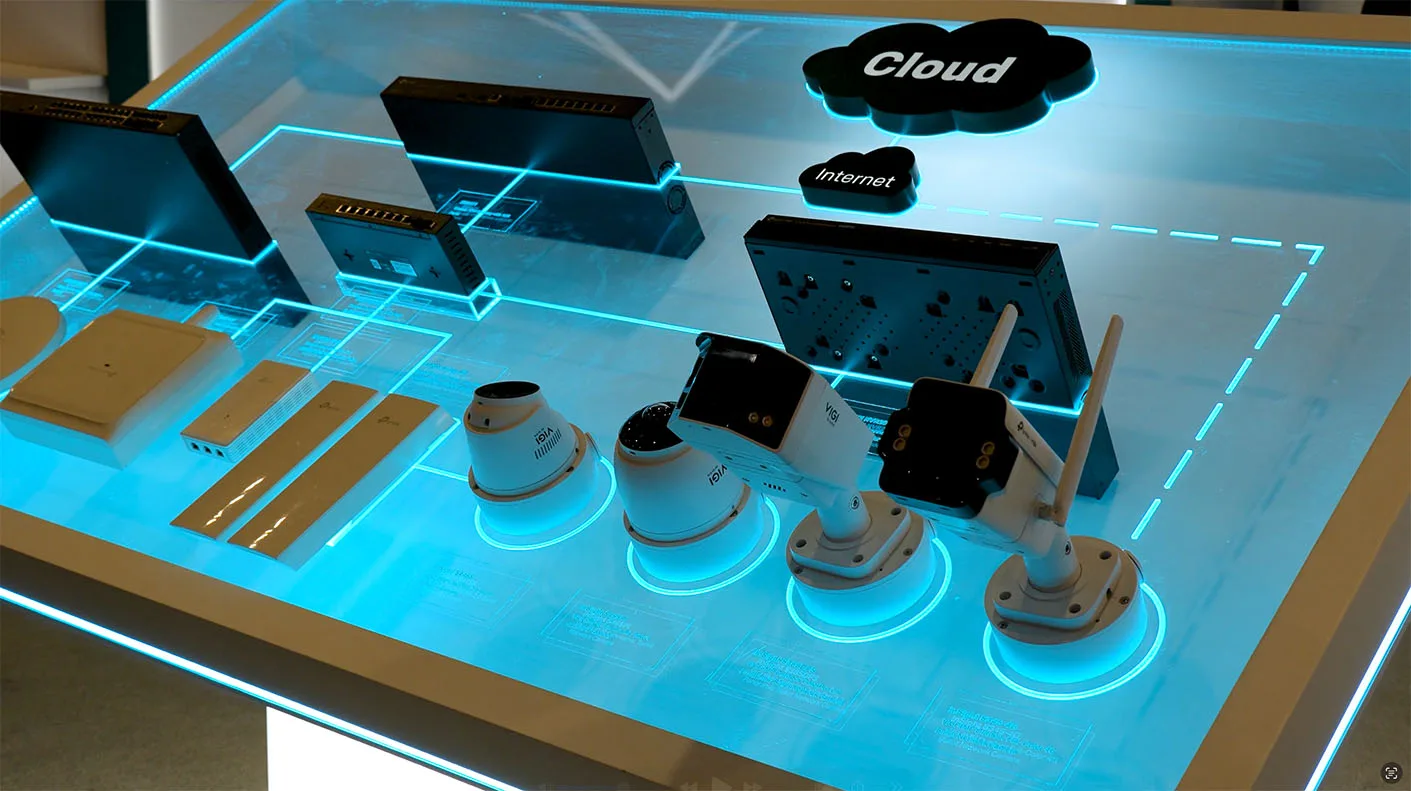
By embedding VIGI into its broader product strategy, TP-Link signals its intent to serve as more than a connectivity vendor. It is now offering an end-to-end surveillance and networking ecosystem from power and connectivity to edge recording and cloud-based management.
Solar and LTE Innovation in VIGI Cameras
Powering Surveillance Without the Grid
At ISC West 2025, one of the most discussed innovations at the TP-Link booth was the solar-powered VIGI camera system designed for remote and off-grid deployments. Clay Fazio, product specialist at TP-Link, introduced the setup with a clear use case in mind: consistent, 24/7 operation in places where power and connectivity aren’t guaranteed.
The solar rig includes two high-efficiency 94W Grade A solar panels, delivering a combined output of 188W. These panels are paired with a rack-mountable battery box containing three 30Ah batteries. Together, the system offers a total capacity of 1,024Wh. This combination allows uninterrupted surveillance even through extended periods without sunlight.
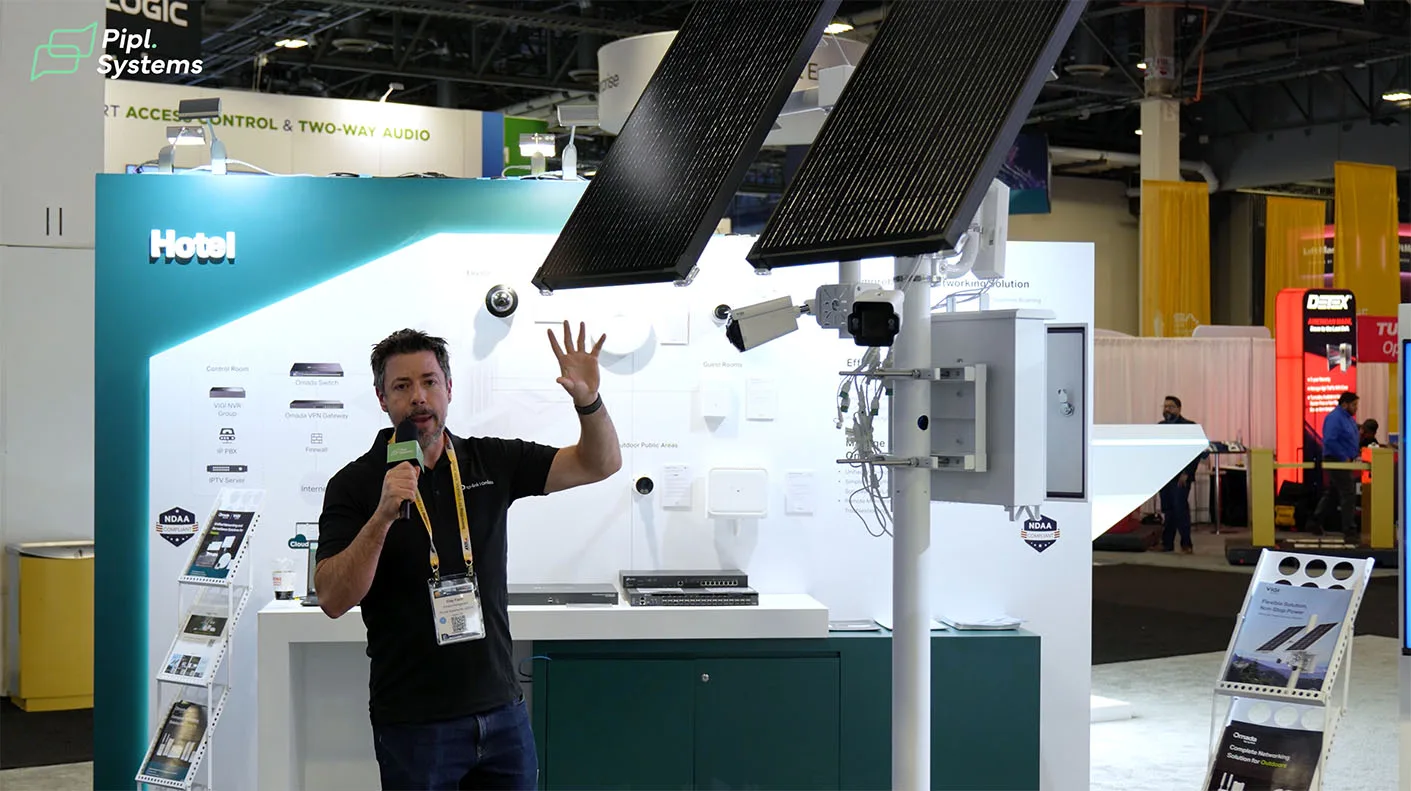
“About 100 hours of continuous use without sunlight,”
said Clay Fazio, highlighting the system’s endurance.
Such performance makes the TP-Link VIGI setup a strong fit for use cases like construction sites, agricultural fields, rural utilities, or temporary event perimeters—anywhere integrators need power autonomy and LTE connectivity.
LTE Connectivity Meets Multi-Camera Management
The solar-powered infrastructure is paired with TP-Link’s new 4G-enabled VIGI camera. This 4MP model is certified for AT&T, T-Mobile, and Verizon networks in the U.S., making it deployable in a wide variety of mobile scenarios. What sets this unit apart is its ability to act as a connectivity hub: it includes three downlink ports that allow integrators to connect up to three additional IP cameras. These are then all backhauled through a single LTE connection.
This wireless bridge-style approach ensures bandwidth efficiency and simplifies deployment. For example, a remote site can operate four cameras through a single SIM card and power source, with onboard recording and cloud relay options fully supported.
Optimized for Low-Power Surveillance
The 4G VIGI camera consumes even less power than TP-Link’s standard bridge kit, extending operational life under solar power. Its onboard storage capability supports SD card recording, while integration with VIGI NVR and VIGI VMS platforms ensures that video feeds remain accessible locally or remotely as needed.
“We designed it specifically for 24-7 use,”
Clay noted, pointing to how TP-Link VIGI is moving beyond just hardware into full-solution territory.
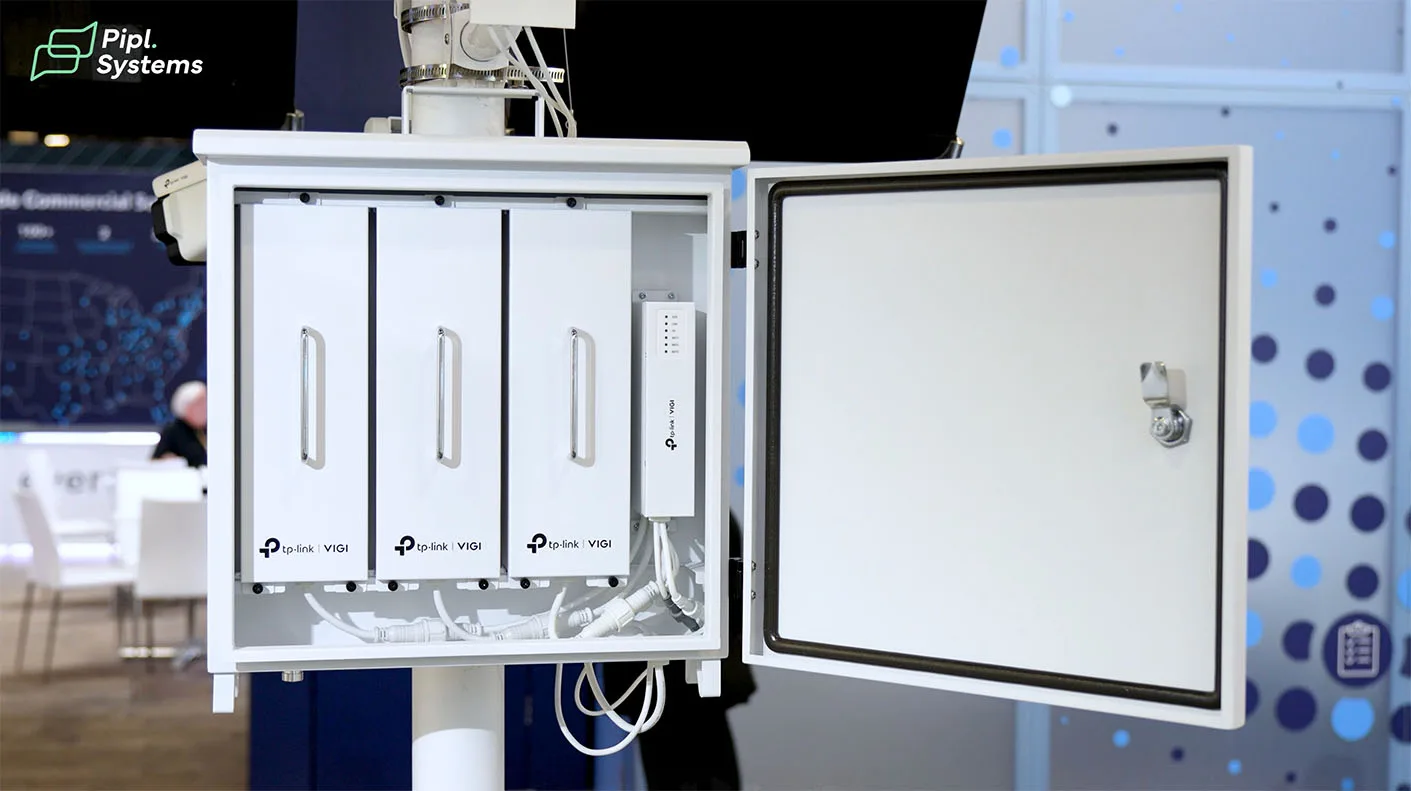
For professionals planning remote deployments or solar-based perimeter coverage, we’ve compiled a comprehensive ranking: 18 Best Wireless Solar Security Camera Systems for 2025: A Comprehensive Guide. This list helps clarify which systems best match autonomy needs, battery capacity, and LTE connectivity.
This solar and LTE configuration reinforces TP-Link’s mission to provide affordable, scalable surveillance for underserved environments. With durability, autonomy, and multi-device coordination baked into the system, the VIGI camera system delivers real flexibility for field deployments.
Free VIGI VMS and Local/Cloud AI Support
TP-Link’s VIGI camera system doesn’t just stand out for its hardware—it also includes a complete software layer built to meet real-world deployment needs. A critical component of this offering is the VIGI VMS (Video Management System), available in both cloud-hosted and local-deployed formats. For integrators and end-users, this means a unified surveillance interface without the typical licensing overhead.
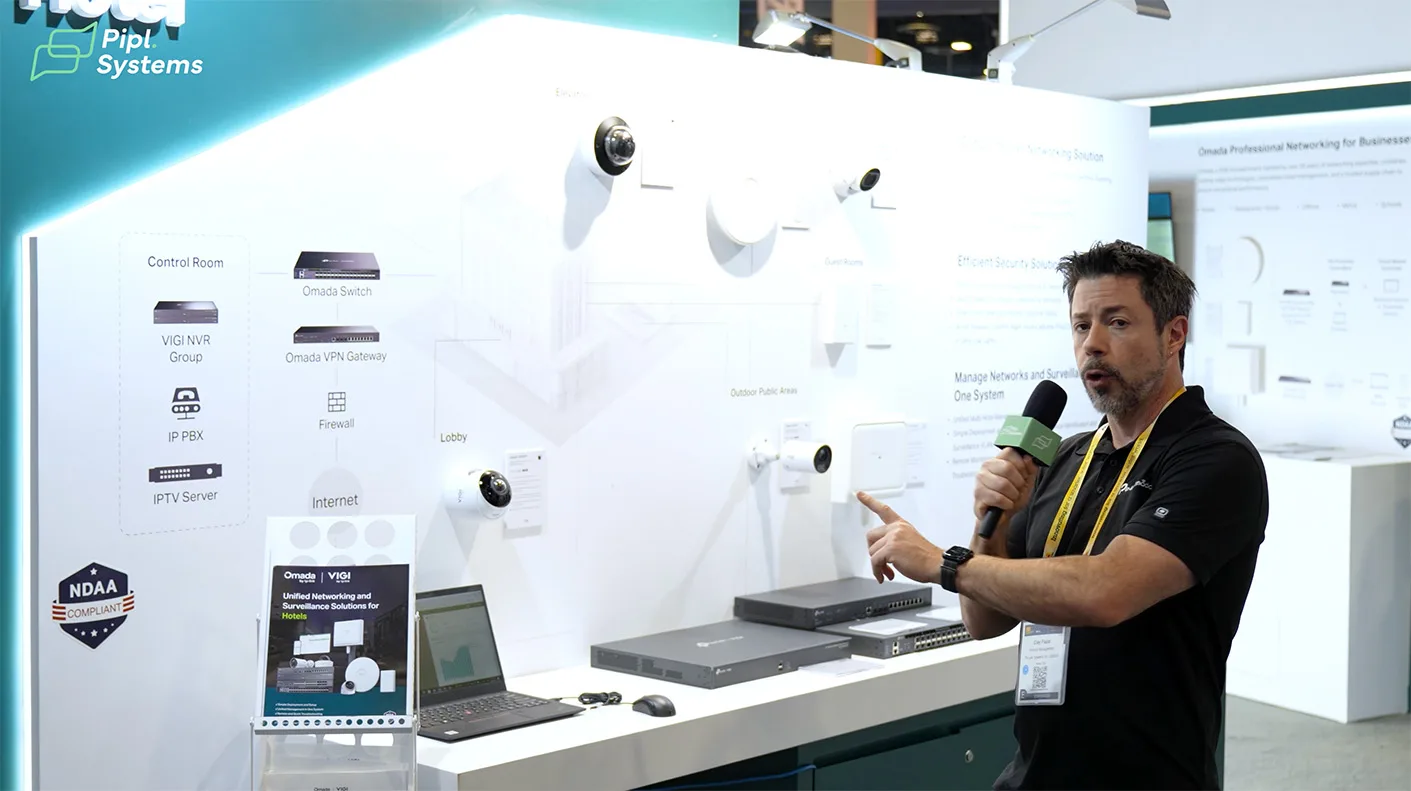
Free Core Features Across Cloud and Local Installations
“Our VMS is completely free for use on the cloud as well as running locally.”
This simple proposition opens the door to broad deployment flexibility, especially for distributed sites like retail chains, construction zones, and municipal projects where managing costs and connectivity matters.
For cloud-based deployments, VIGI Cloud VMS allows remote management of unlimited sites, with real-time map monitoring, centralized event logs, and batch device onboarding. Powered by AWS and integrated with the VIGI App, this platform provides mobile and web access with no VPN required.
On the local side, VIGI VMS is a standalone software that supports up to 64-channel live views, AI monitoring, and unified alarm management. With support for third-party ONVIF and RTSP cameras, the software can scale horizontally across NVRs, camera groups, and administrative roles—all license-free.
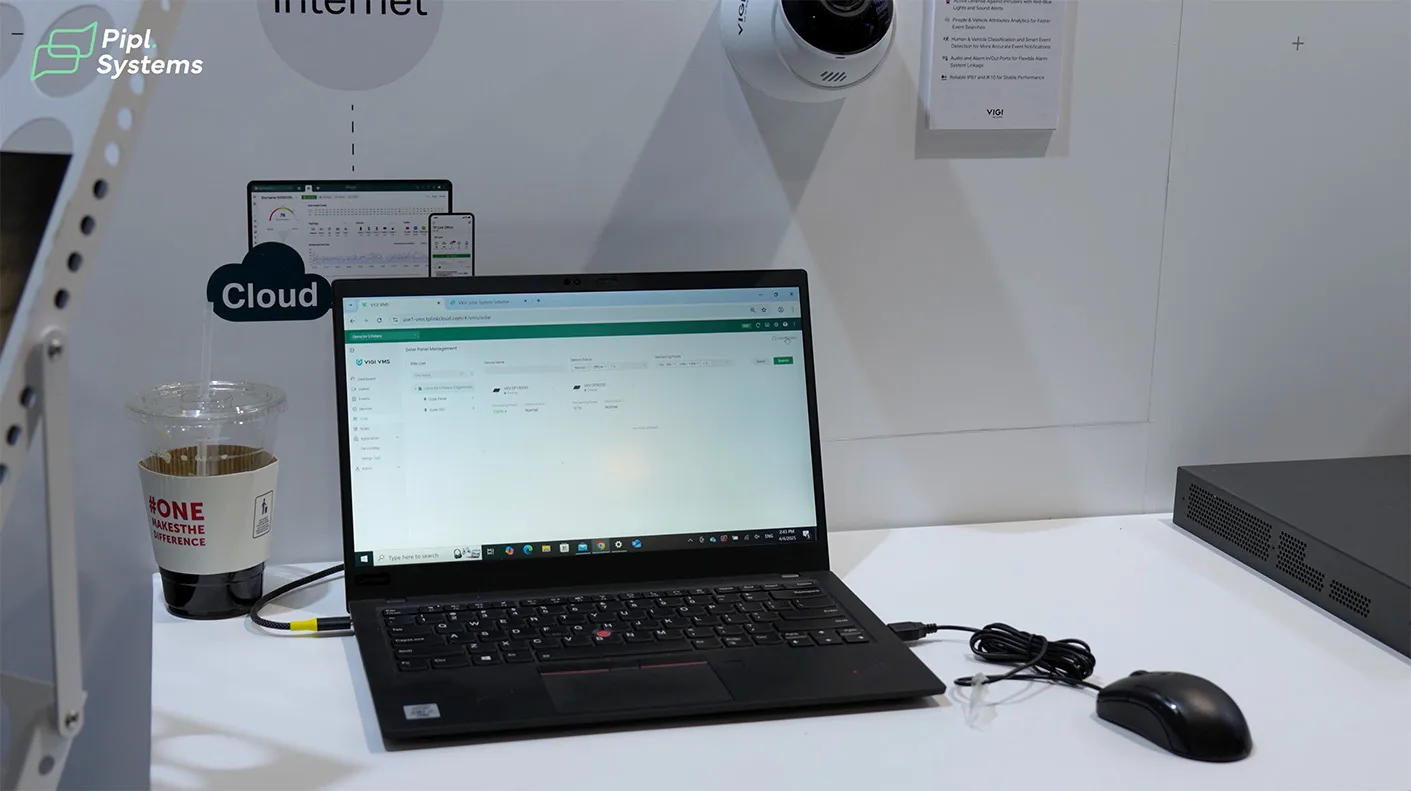
Optional Cloud-Based AI Capabilities
“We do have a couple of other packages that allow for a very high-end AI capabilities… if you’re running them on the cloud.”
That distinction is key: local users gain full access to VIGI analytics without added cost, while enterprise users operating at scale can opt into enhanced cloud features.
“If you’re running a local version of our VMS, you get all of VMS capabilities for free including the analytics.”
VIGI NVR: Scalable Storage and On-Site Control
While VIGI VMS software handles the orchestration layer, VIGI NVRs form the backbone of local recording and playback. Available in 8-, 16-, and 32-channel models—with 64- and 128-channel versions coming soon—these devices are designed to cover everything from small business installations to complex multi-camera environments.
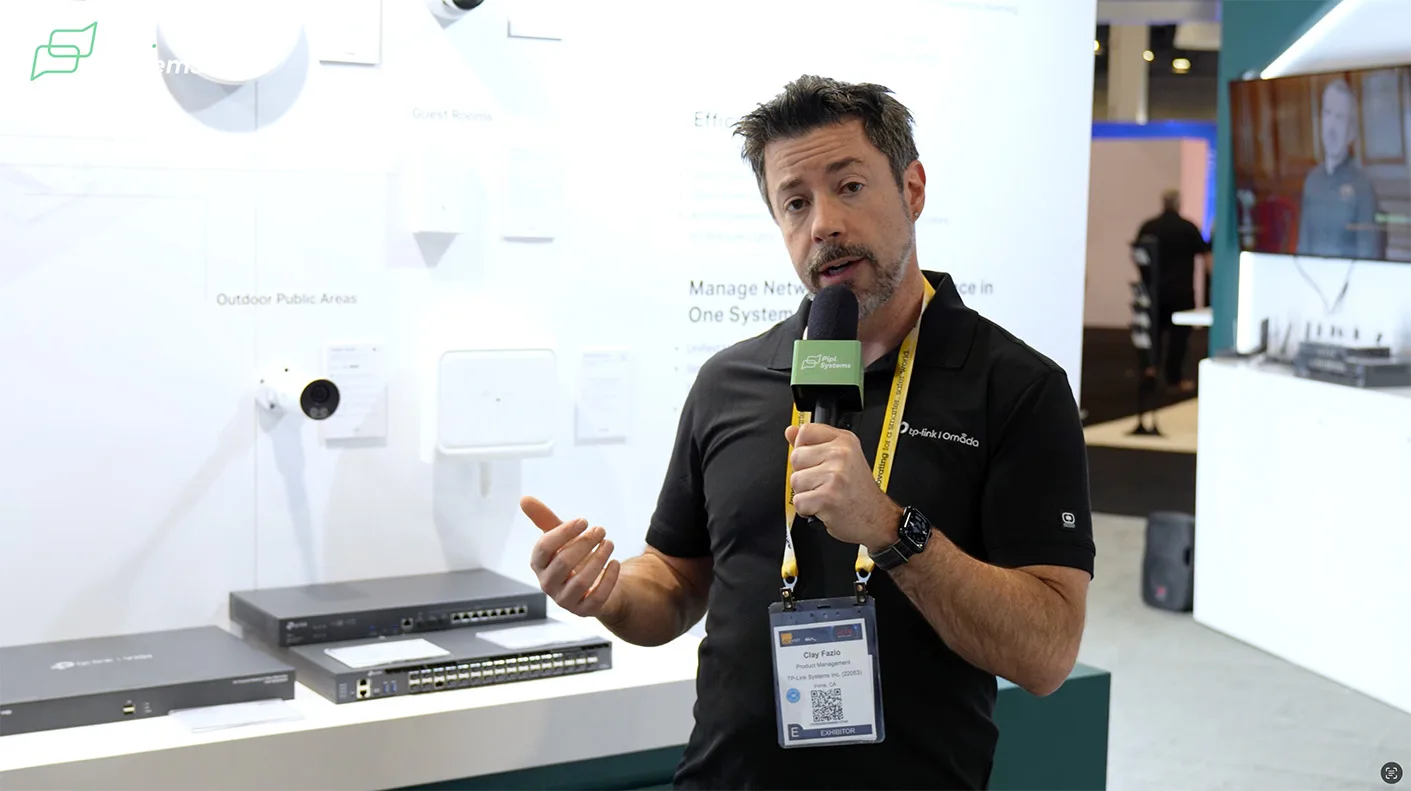
“We also have NVRs and we have several NVRs today from 8 up to 32 and we’re currently in the process of releasing our 64 channel NVR and we’ll also have 128 channel NVR at the end of this year.”
NVRs in the TP-Link VIGI lineup support Power over Ethernet (PoE), HDMI output, and seamless integration with both VIGI and third-party ONVIF cameras. They serve as an ideal local storage hub for areas with poor connectivity or strict data residency requirements.
Combined with VIGI VMS, NVRs can be managed remotely via the TP-Link ID system, enabling administrators to configure, update, and troubleshoot devices without site visits.
To learn how other VMS platforms stack up, explore our independent analysis:
6 Best IP Camera Monitoring Software 2025: Which Is the Best Choice?
Omada Central: Seamless Network and Surveillance Convergence
TP-Link’s unified platform took a new step forward at ISC West 2025 with the introduction of Omada Central, a software-defined management solution that connects the company’s networking backbone with its VIGI surveillance infrastructure. Leading the walkthrough, Kevin Dinh from TP-Link broke down how Omada Central brings together two previously distinct domains: connectivity and security monitoring.
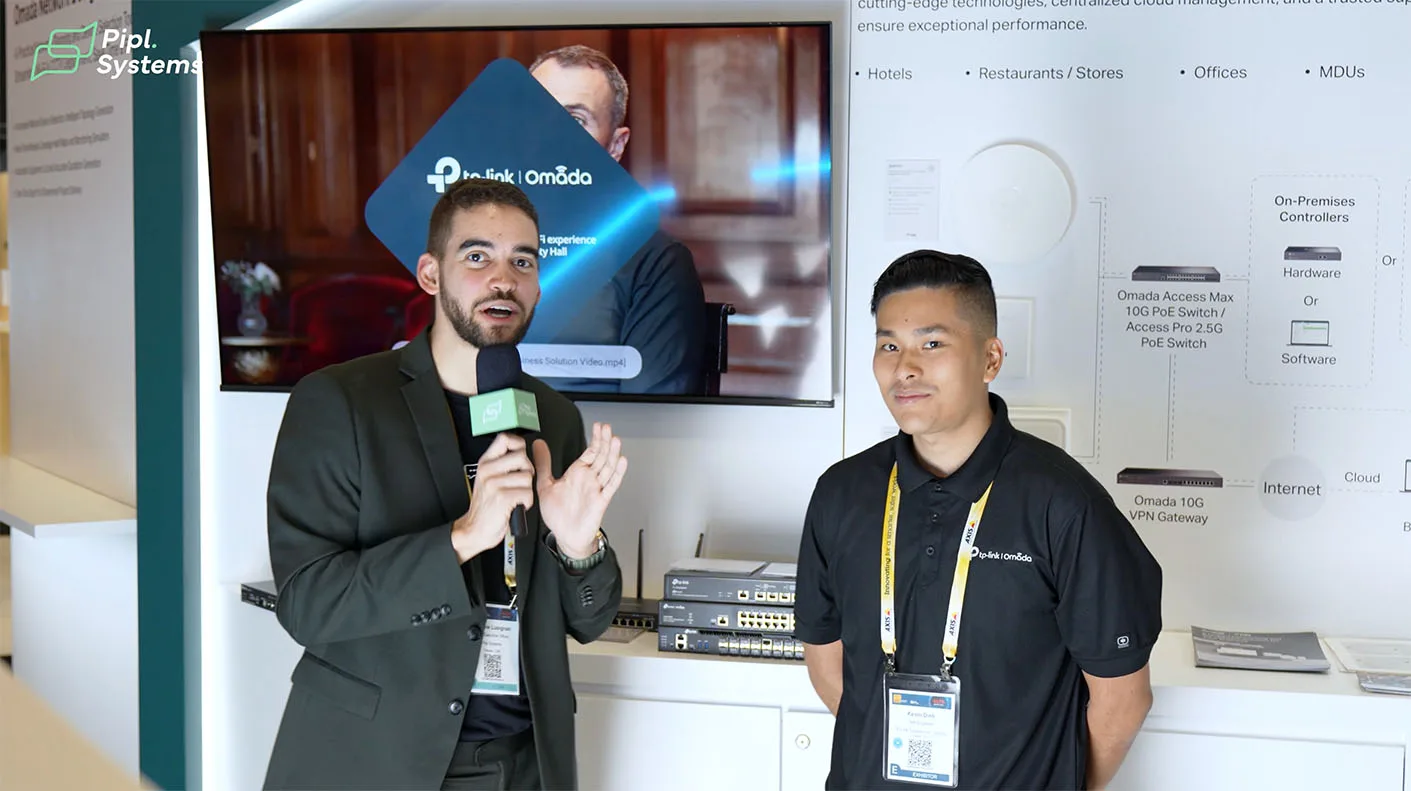
“Today we’re showcasing something called Omada Central. Omada Central will be managing both the networking side as well as the video surveillance side as well.”
This dual capability is central to TP-Link’s strategy for scalable deployments across multiple verticals, including hospitality, education, restaurants, MDUs, and enterprise campuses. It also positions Omada Central as a direct competitor to more complex enterprise-grade NMS platforms, while staying installer-friendly.
A New Layer of Unified Management
Omada Central acts as a cloud-native controller, accessible via the Omada App, browser, or Omada Cloud portal. It provides centralized visibility and control over routers, switches, access points, and now VIGI cameras and NVRs. Unlike siloed solutions, Omada Central handles networking performance diagnostics and video analytics alerts from the same dashboard.
With support for both on-premises hardware controllers and the newer cloud-based controllers, Omada Central ensures high availability across various deployment models. The system is also backed by Omada CDN, a global content delivery infrastructure optimized for remote provisioning and firmware distribution.
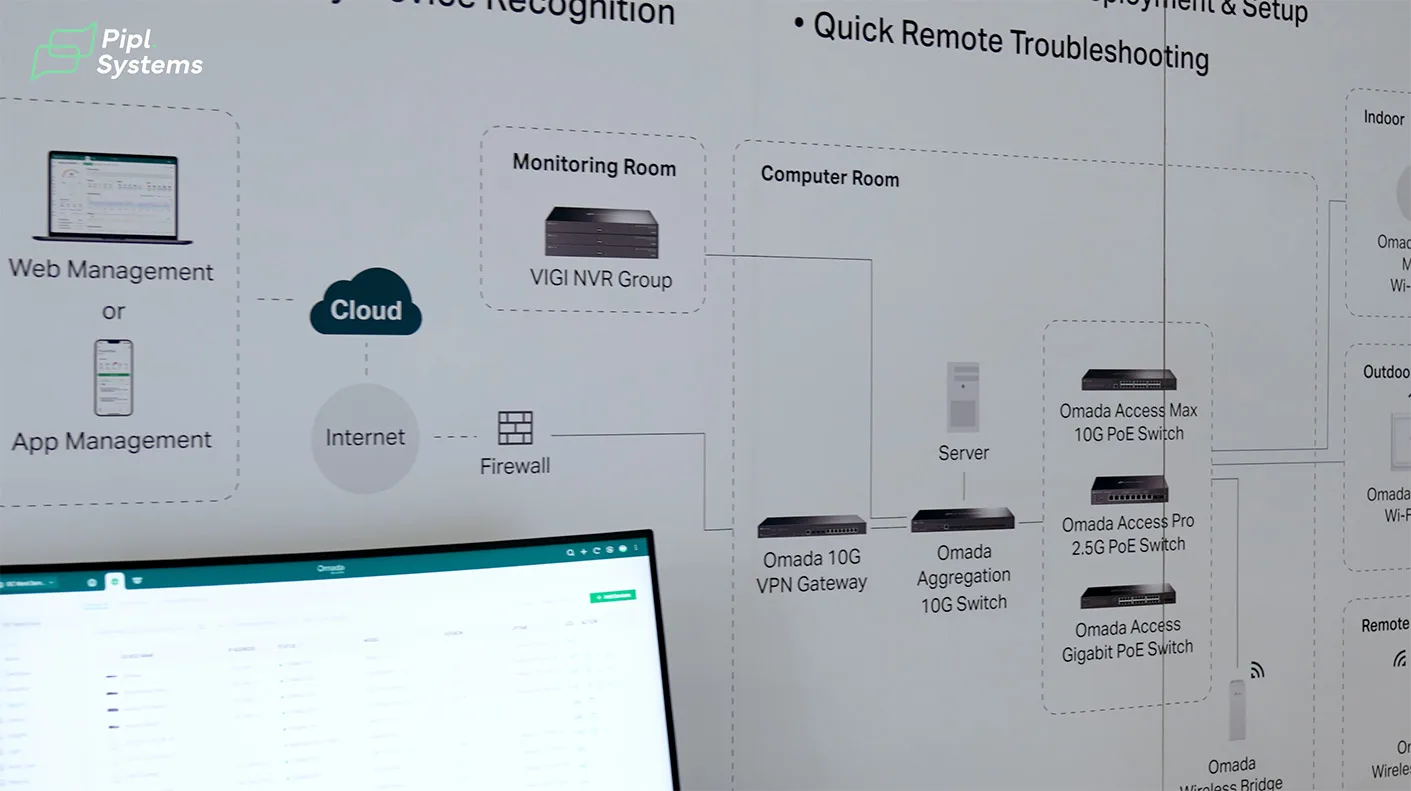
From the demonstration at ISC West, visitors could see how Wi-Fi 7 tri-band access points, 10G gateways, L3 switches, and VIGI camera systems all came together in a single ecosystem. As Kevin noted, the flexibility of Omada hardware lets integrators tailor topologies to very specific customer needs.
“We have a variety of different access points from Wi-Fi 7 tri-bands, dual-bands, outdoor access points… each of them have their own use case.”
Designed for Speed and Ease of Use
A recurring theme throughout the showcase was deployment efficiency. Omada Central simplifies rollout for multi-site networks and enables real-time surveillance monitoring across locations. The result is reduced labor, faster ROI, and minimal training time.
“Everything is to be seamless, everything is to be very easy to use, as well as to increase the time in which you can deploy your solutions.”
This emphasis on simplicity has made Omada Central especially attractive for mid-size organizations that need enterprise-grade controls but lack a dedicated IT department.
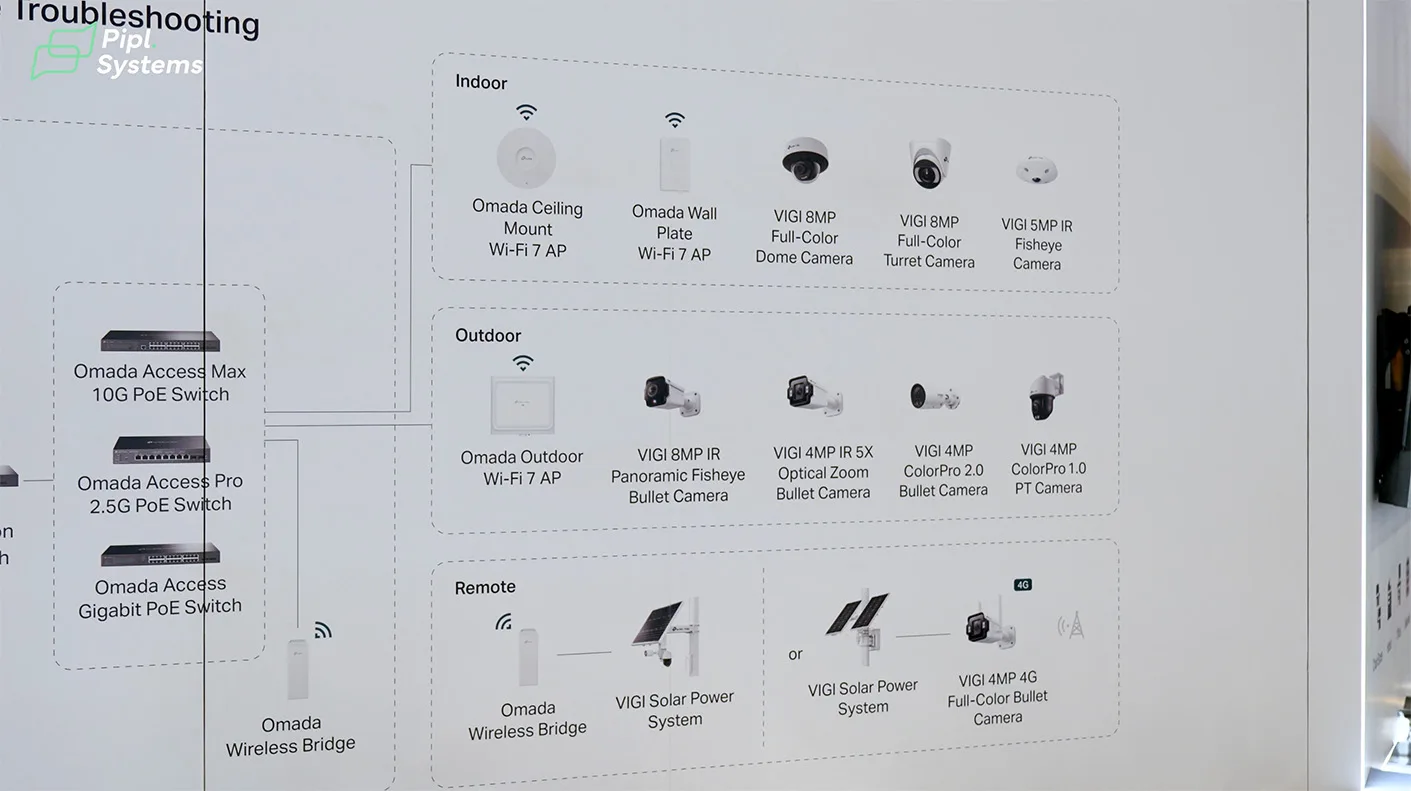
Intelligence Meets Integration
With Omada now managing VIGI NVRs and video streams alongside networking gear, TP-Link is also moving toward tighter integration of analytics and response. Real-time map monitoring, cloud-triggered event alerts, and AI-powered video analysis can be managed from a single portal. For a deeper dive into smart surveillance platforms that leverage such AI workflows, check out 5 Best Security Video Analytics Software 2025 – Features & Reviews.
TP-Link’s approach with Omada Central marks a significant evolution in unified systems. Rather than treating surveillance and networking as separate tracks, the platform demonstrates how they can coexist in an optimized, user-friendly stack.
Omada Topologies and Vertical Deployments
At ISC West 2025, TP-Link delivered a detailed walkthrough of how Omada infrastructure supports diverse deployment scenarios across industries. Kevin Dinh, product specialist at TP-Link, presented real use cases tailored for hotels, MDUs, retail environments, restaurants, and educational facilities, each mapped to specific equipment within the Omada ecosystem.
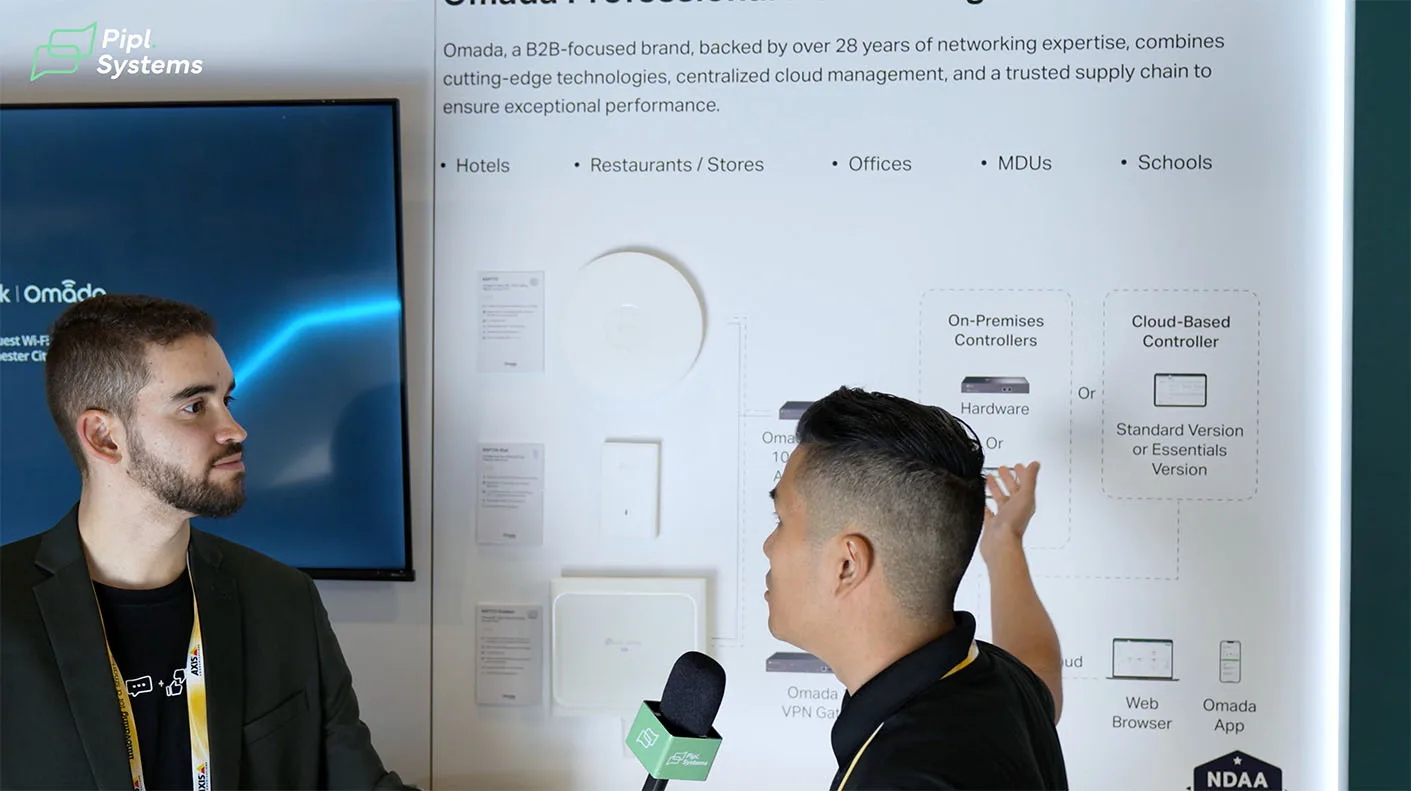
Purpose-Built Wi-Fi 7 Access Points
Dinh emphasized how TP-Link’s latest wireless access points support a range of indoor and outdoor conditions:
“We have a variety of different access points from Wi-Fi 7 tri-bands, Wi-Fi 7 dual-bands and Wi-Fi 7 tri-band outdoor access points as well. Each of them have their own purpose. Each of them have their own use case.”
Wi-Fi 7 technology improves throughput and performance in high-density environments. Tri-band units provide separate lanes for latency-sensitive traffic, ideal for classrooms, hotel suites, and retail floor plans.
Switching Solutions for Enterprise Growth
In the central demo, TP-Link showcased multiple layers of switching hardware. Kevin highlighted the modular structure:
“We do have a variety of different switches ranging from L3 switches, L2 plus switches as well as our multi-gig switches.”
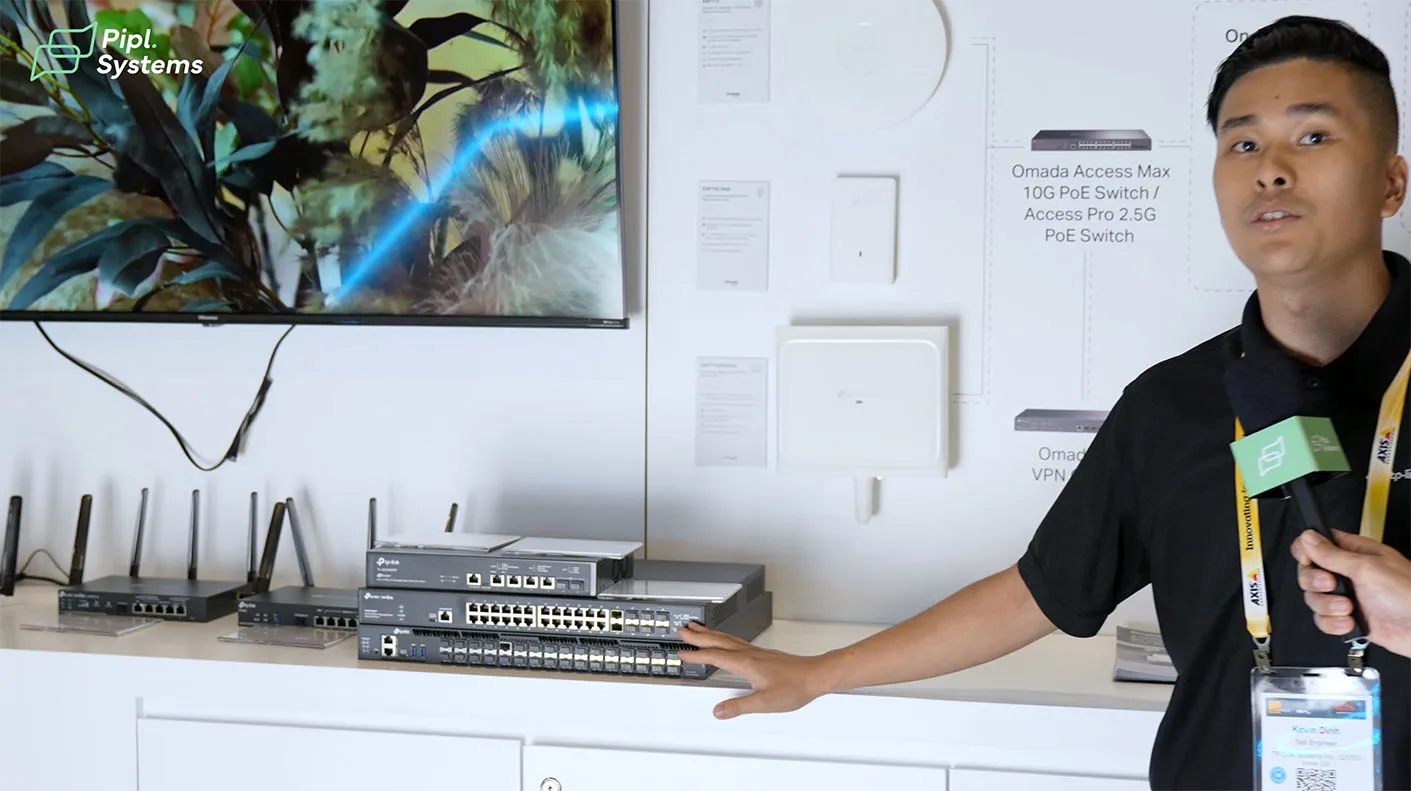
These switches enable network segmentation and high-throughput routing for distributed systems, particularly relevant for MDUs and school campuses.
Gateways With LTE and Multi-Gig Support
Kevin pointed out new edge devices designed for flexible uplinks:
“This particular model is a 706W 4G. This particular model does have the 4G capabilities as well as wireless… We have the 706W, which is a pure wireless gateway.”
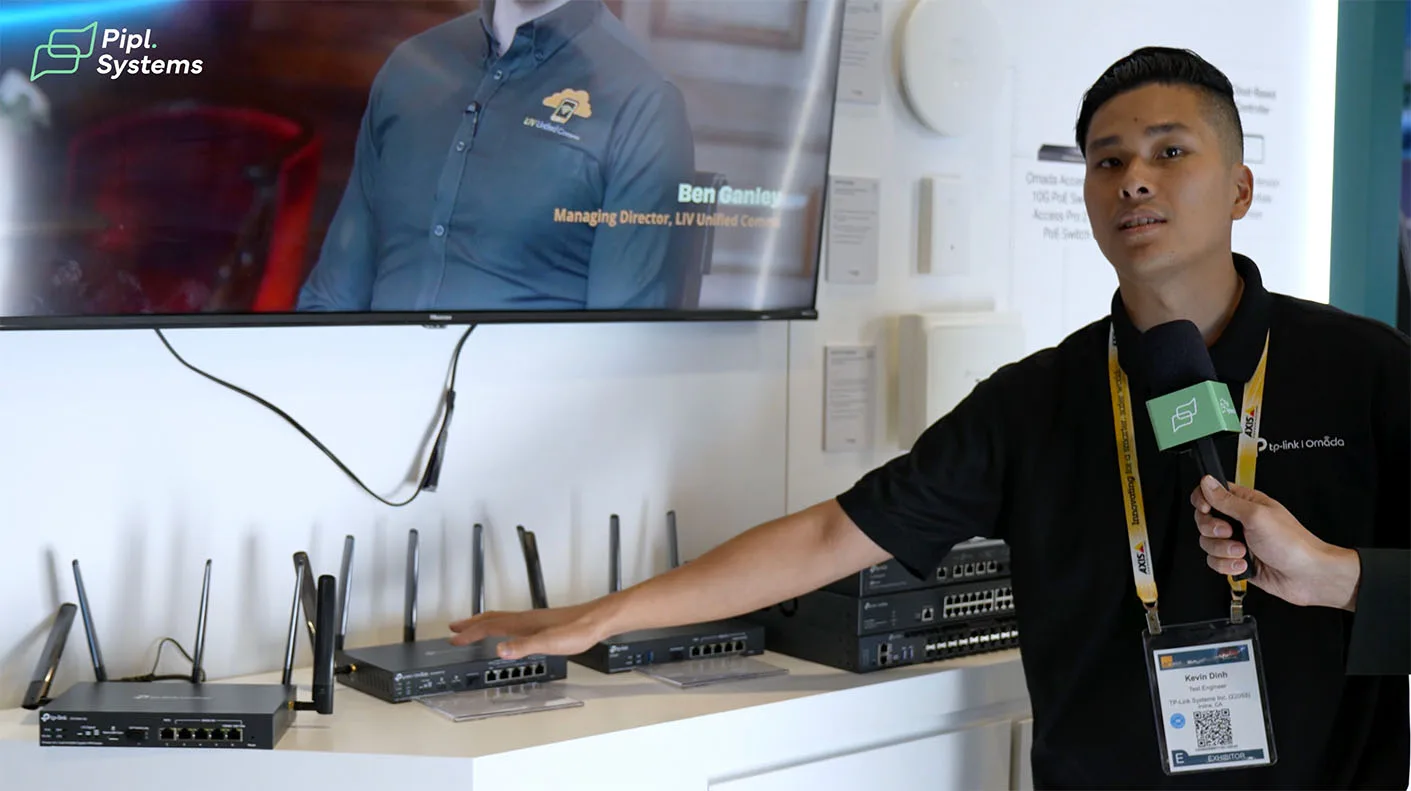
These gateways provide rapid rollout options where wired backhaul is unavailable. They’re suited for pop-up sites, mobile classrooms, or stores operating in leased commercial spaces.
Infrastructure Designed for Hospitality and Education
TP-Link offered a detailed visual of how the topology adapts to real-world business models. Each deployment scenario was represented on-site with application-specific components from Omada APs in hallways to VIGI cameras in elevators and outdoor areas.
“Up top, we have a variety of different verticals that we also focus on—ranging from hotels, restaurants, offices, MDU and schools as well.”
These configurations reflect TP-Link’s understanding of the North American market’s needs for consolidated networking and surveillance.
Built-In Support for Omada CDN and Unified Management
While not emphasized directly in quotes, Omada Central includes built-in CDN support for faster distributed delivery of control data. This matters especially in multi-site projects where latency or bandwidth caps would limit performance.
Kevin summed up the platform’s usability clearly:
“Everything is seamless. Everything is very easy to use.”
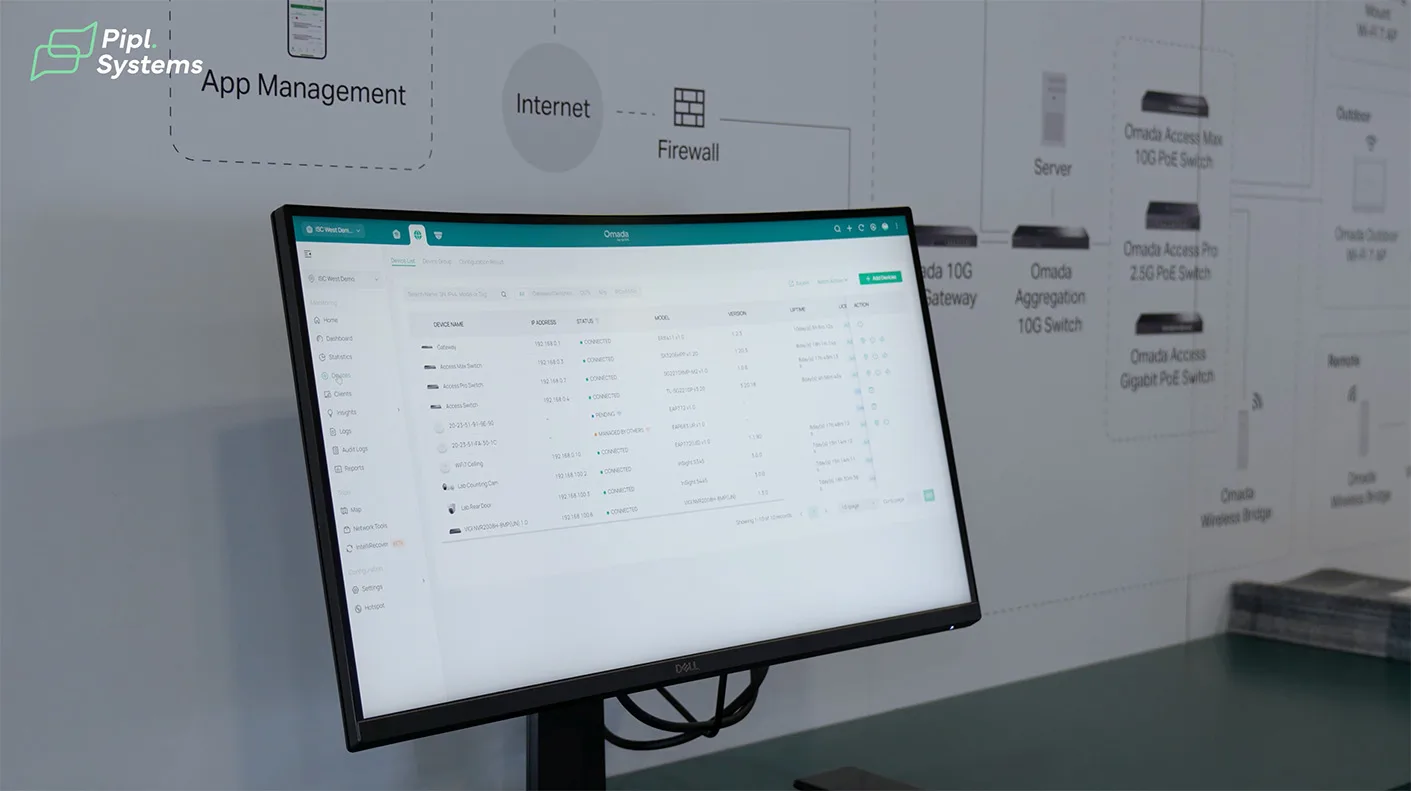
In complex deployments where installers must balance surveillance, access, and networking hardware from a single pane of glass, Omada provides the visibility and control professionals expect in 2025.
Installer Benefits: Interoperability and Ecosystem Control
TP-Link’s integration of the VIGI camera system and Omada Networking platform provides a streamlined, ecosystem-level solution built for professional deployment. From hardware to cloud management, this unified stack reduces friction across every stage of installation, making it easier for security integrators to deliver end-to-end coverage with confidence.
One Platform, Multiple Technologies
VIGI and Omada aren’t siloed products. At ISC West 2025, TP-Link’s team emphasized how the platforms communicate natively through Omada Central. This lets integrators unify IP surveillance, access points, switches, and gateways through a single dashboard, improving visibility and reducing the chance of integration errors.
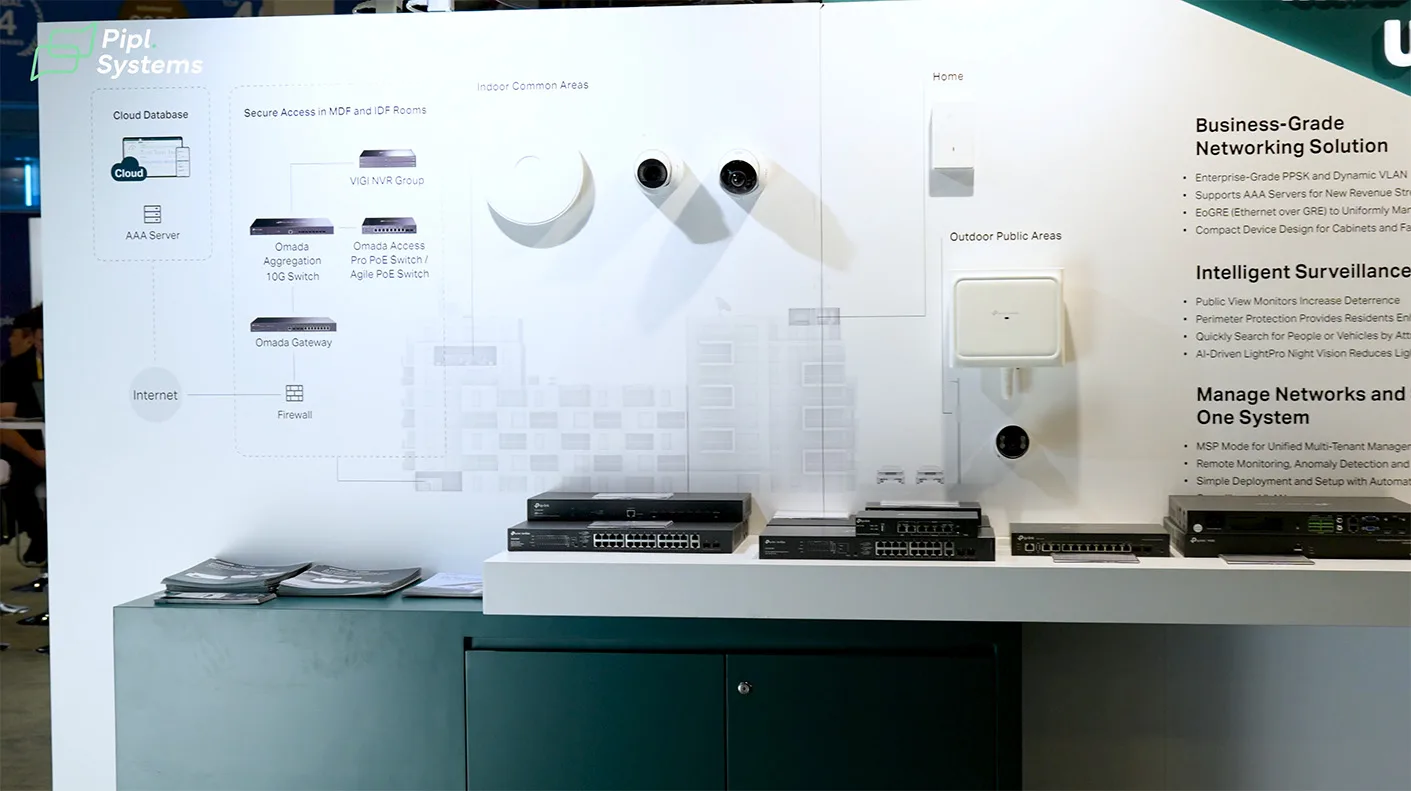
“The goal is everything is to be seamless, everything is to be very easy to use,” noted Kevin Dinh.
This interoperability also means less time on configuration and more time focused on client outcomes. Whether you’re installing in a new MDU development or upgrading an outdated campus network, the system’s plug-and-play architecture with pre-certified compatibility across Omada and VIGI hardware simplifies the entire rollout process.
Reduced Deployment Time, Increased ROI
With intuitive topologies, PoE+ support, auto device discovery, and zero-touch provisioning through the Omada App, installers can deploy full-stack systems without third-party middleware or complicated protocols. The modular design also supports partial upgrades, letting integrators phase deployments or work within legacy constraints.
In real-world scenarios, this translates into fewer truck rolls, smoother service transitions, and faster handoffs to IT or operations teams.
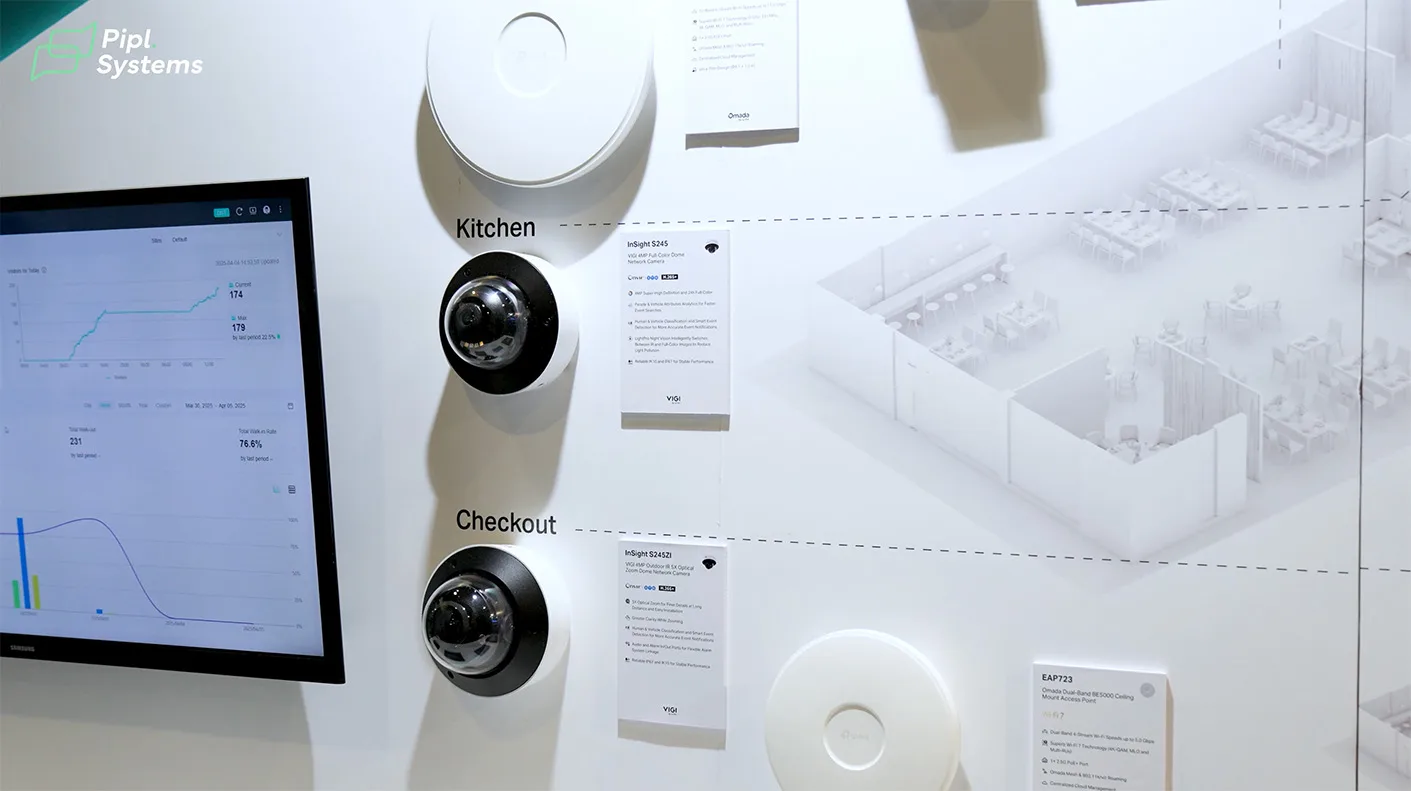
“We expect this to be our latest and greatest technology in terms of management of Omada as a whole entire ecosystem,” Dinh explained, referencing the platform’s end-to-end flexibility.
Business Value for Installers and Consultants
This integration-friendly approach also opens up opportunities for recurring revenue through remote management and long-term client support. For professionals seeking to grow their service offerings, the combination of TP-Link’s zero-license VMS and network visibility makes it easier to build bundled packages across surveillance and connectivity.
For installers looking to sharpen their margin strategy, don’t miss our guide: Boost Your Profits: 5 Insider Tips for Security Camera Installers to Maximize Margin and Increase Revenue.
From faster deployment to streamlined operations, TP-Link’s unified platform delivers measurable value for both installers and their customers.
Conclusion: A Cohesive Path for TP-Link in North America
At ISC West 2025, TP-Link clearly demonstrated how its two core platforms, VIGI and Omada, are converging into a unified solution that speaks directly to the needs of modern integrators and security consultants. With VIGI cameras delivering robust, solar-ready surveillance capabilities and Omada Central offering scalable network and device management, the company positions itself not as a newcomer but as a serious, infrastructure-level player in the North American market.
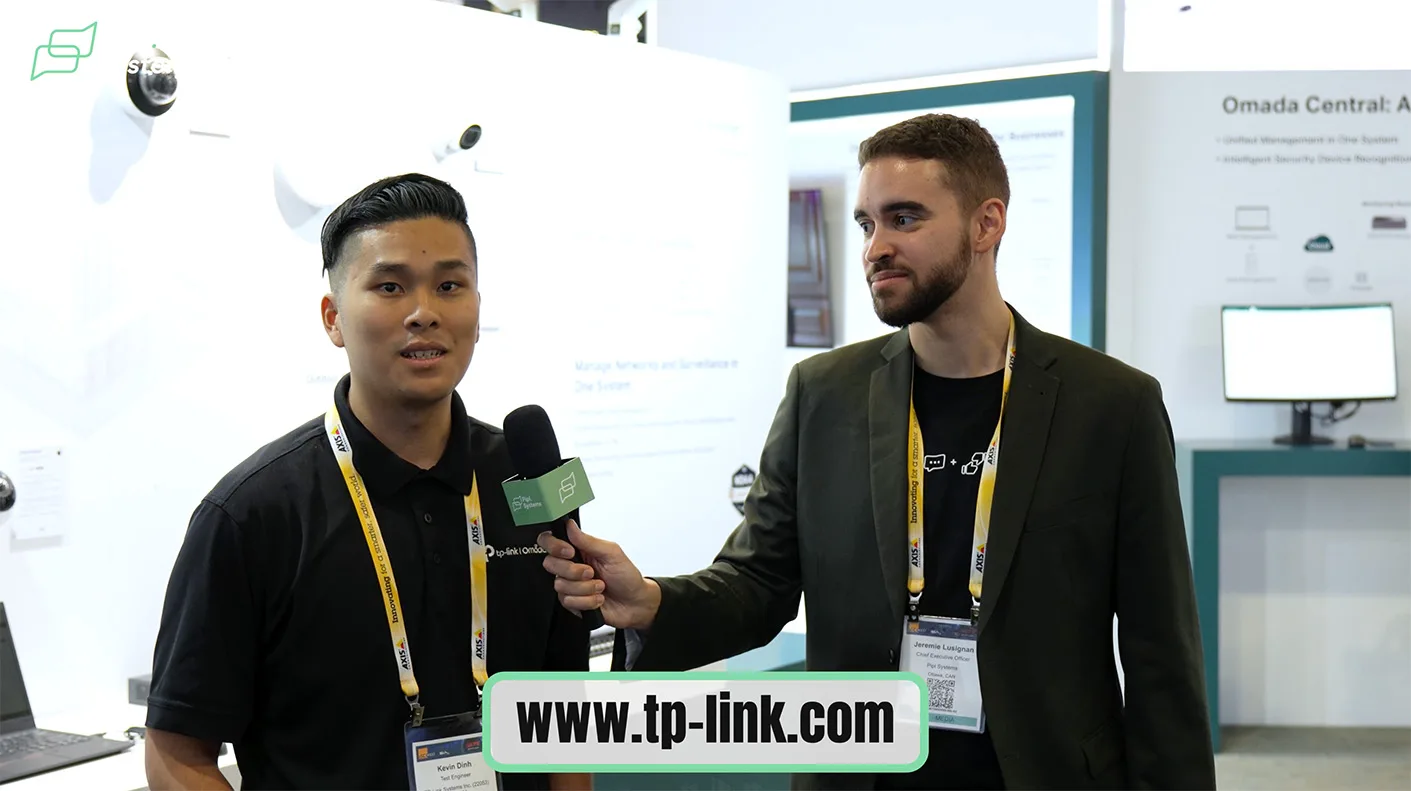
From rural sites requiring LTE connectivity to large-scale commercial properties demanding layered network security, TP-Link now offers a stack that balances affordability, flexibility, and enterprise-grade control. The integration of surveillance and networking under a single software-defined platform streamlines not only system deployment but also ongoing operation, key for long-term project success.
TP-Link’s approach shows maturity and intention. With expanded support for multi-vertical topologies, an increasing product line tuned for North American requirements, and native cloud management tools, the brand is clearly building momentum.
For professionals seeking actionable insight into connected surveillance and infrastructure, Pipl Systems will continue providing updates, walkthroughs, and technical insights from across the security technology landscape.
FAQ: TP-Link VIGI and Omada Centra
What is the difference between VIGI and Omada?
VIGI is TP-Link’s video surveillance product line, including security cameras, NVRs, and VMS platforms (both local and cloud). Omada, by contrast, is a network management ecosystem for switches, access points, and gateways. Omada Central now unifies both systems, allowing users to manage video and networking from a single interface.
Can VIGI cameras be used without Wi-Fi?
Yes. VIGI cameras can operate over wired connections or through 4G LTE with the appropriate hardware, making them suitable for off-grid installations or areas where Wi-Fi infrastructure is unavailable.
How much storage do I need with a VIGI NVR?
Storage needs depend on the number of cameras, recording resolution, and retention period. For instance, a 16-channel VIGI NVR recording at 1080p with continuous recording may require multiple terabytes of space for 30 days of footage. VIGI NVRs support both built-in and external drives for scalable capacity.
Is Omada Central free?
Yes, Omada Central offers a free tier that includes full visibility and control of TP-Link devices. Advanced features such as AI-powered insights or extended device analytics may be part of future premium versions, but the base system remains license-free and highly functional.
Can I deploy this in a school with no IT team?
Absolutely. Both VIGI and Omada are designed with intuitive interfaces, zero-touch provisioning, and centralized cloud control. Small institutions like schools can manage their systems using the Omada App or Web Portal with minimal technical overhead, making it a practical choice for limited-resource environments.
